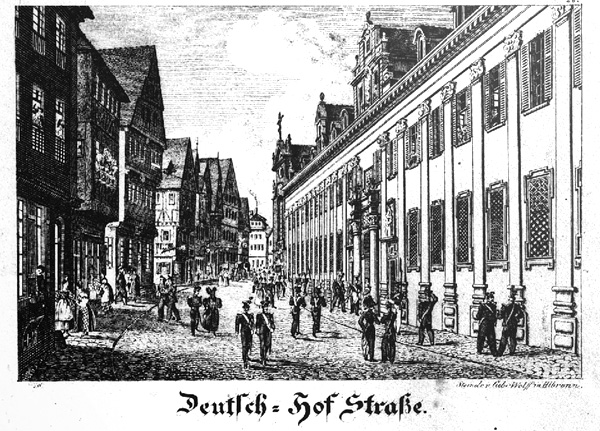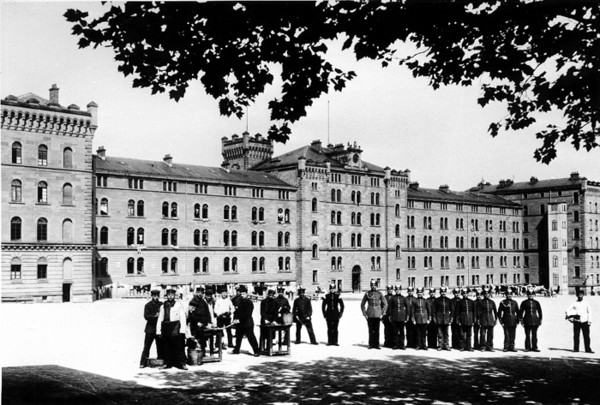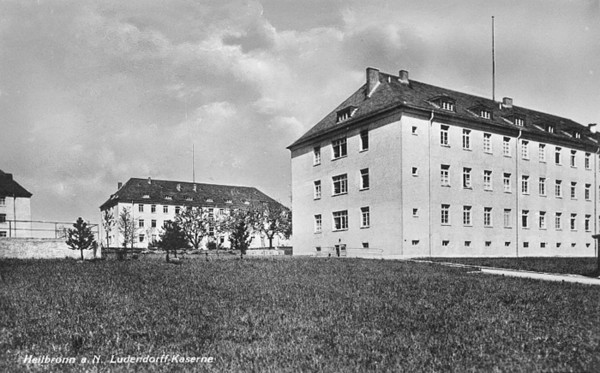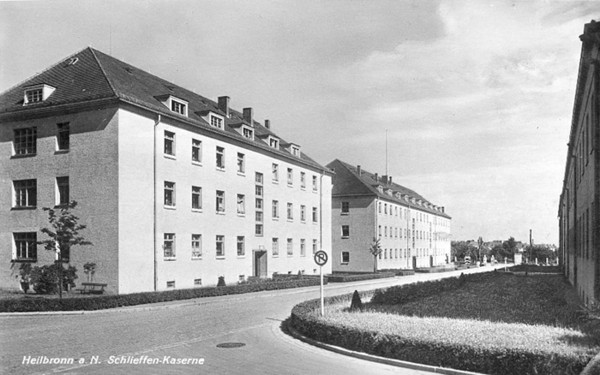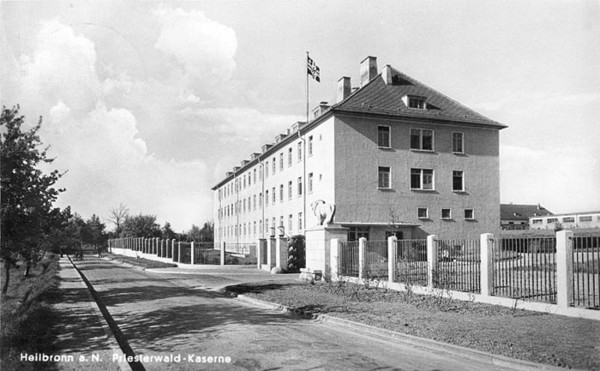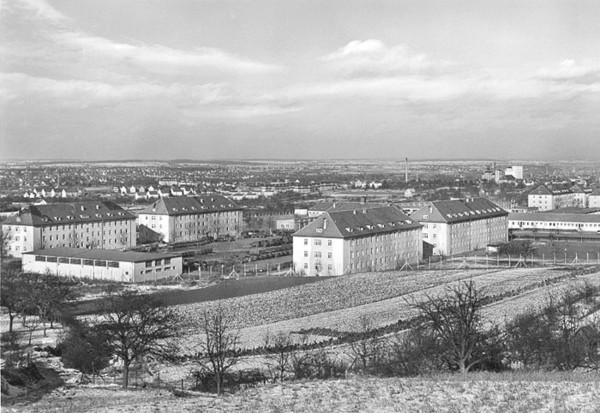Barracks in Heilbronn (1806-1992)
Barracks at the Deutschhof (former commandery of the German Knight Order)
1806 use as barracks from various Württemberg infantry regiments
1848/49 was shared by the 8th Infantry Regiment in the revolutionary unrest, thus afterwards being transferred to Ludwigsburg.
From 1883 onward Heilbronn was no longer a garrison city.
Fusilier Barracks, Kernerstraße 65 (between Bismarck- and Karlstraße)
1880 Construction begins
1883 Occupied by parts of the 4th Infantry Regiment 122 of Württemberg
1921 Closing of Heilbronn garrison
1934 Stationing of soldiers from the German Wehrmacht and renaming to Moltke Barracks
1948 Renaming to Frankenhof
1956 Demolition
Ludendorff Barracks, Admiral-Scheer-Straße (today: Badener Straße)
1935 New construction as barracks for the German Wehrmacht’s heavy artillery unit
1945-1950 Use as a camp for "Displaced Persons" through IRO (International Refugee Organisation)
1948 Renaming to Badener Hof-Barracks
From 1952 Use by American troops
1992 Departure of US troops
1994 Demolition and reconstruction as a residential area
Schlieffen Barracks, Schlieffenstraße 8-14 (today: John-F.-Kennedy-Straße)
1935 New construction for and used by the German Wehrmacht
1945-1951 Use as a camp for "Displaced Persons" through IRO (International Refugee Organisation)
1948 Renaming to Hessenhof
1952 After occupation of American troops renamed to Wharton Barracks
1992 Departure of US troops; Demolition of buildings except for a few (3 blocks along the Stuttgarter Straße)
Since 1999 reconstruction as "Businesspark Schwabenhof"
Priesterwald Barracks, Tiroler Straße 185 (today: Charlottenstraße)
1936 New construction for and used by the German Wehrmacht
1938 Renaming to Priesterwald Barracks
1945-1951 Use as a camp for "Displaced Persons" through IRO (International Refugee Organisation)
1948 Renaming to Schwabenhof
1952 After occupation of American troops renamed to Wharton Barracks
1992 Departure of the US troops; following, use of the buildings as homes for asylum seekers, thereafter demolition
Since 1999 reconstruction as "Businesspark Schwabenhof"
In the 1950s the Wharton Barracks complex was externally expanded with the construction of the Herbert Hoover and Kennedy residential areas, as part of the American Garrison. They continued to be used as apartment housing.
In 1945/46 the Polish inmates from the DP camp erected a memorial to honor the memory of their compatriots, who did not survive the Second World War. The memorial was named The Polish Cross and stood on the grounds of the former Wharton Barracks. In 1998 it was classified as a cultural monument. In the course of restructuring the old barracks terrain, the cross was relocated to a small park along Charlottenstraße. With a new socket and an inscription in the ground, it reminds one of the earlier DP camp.
